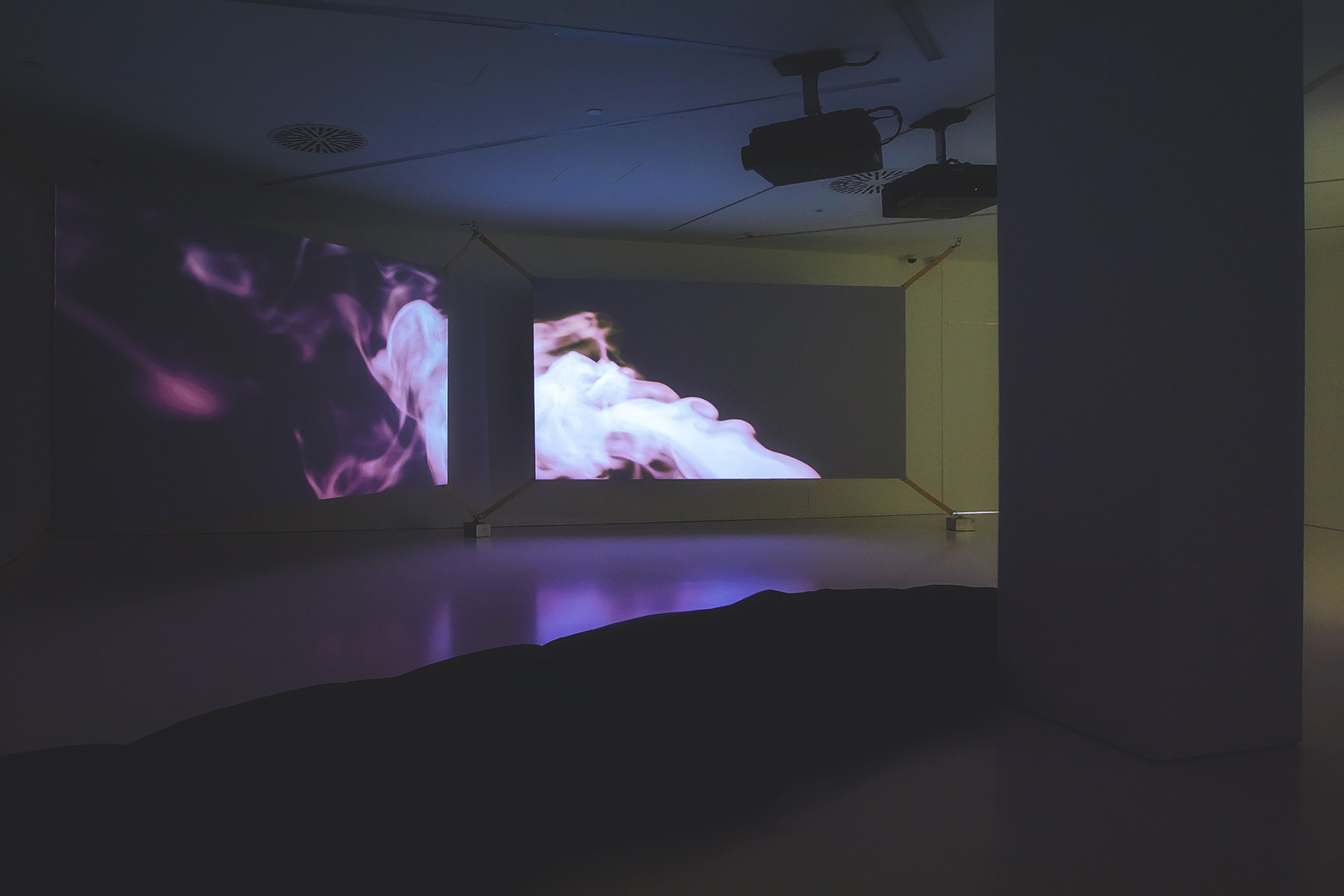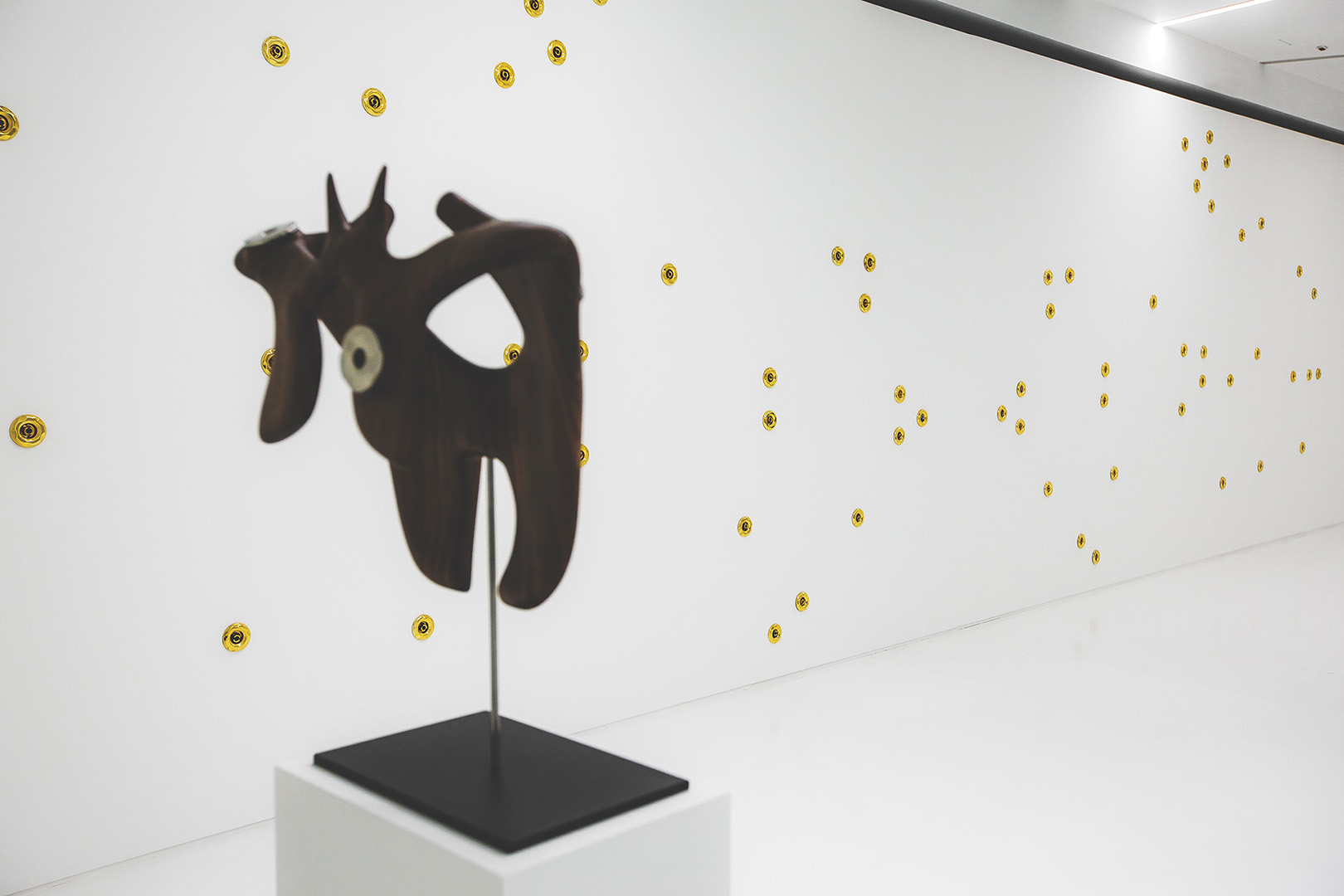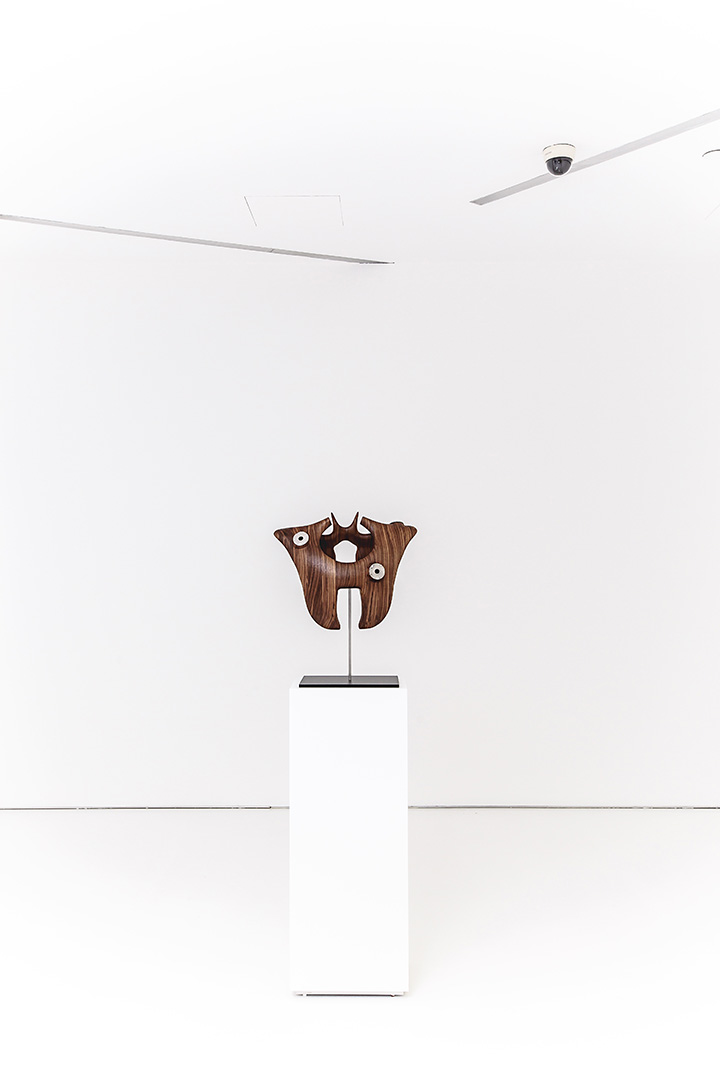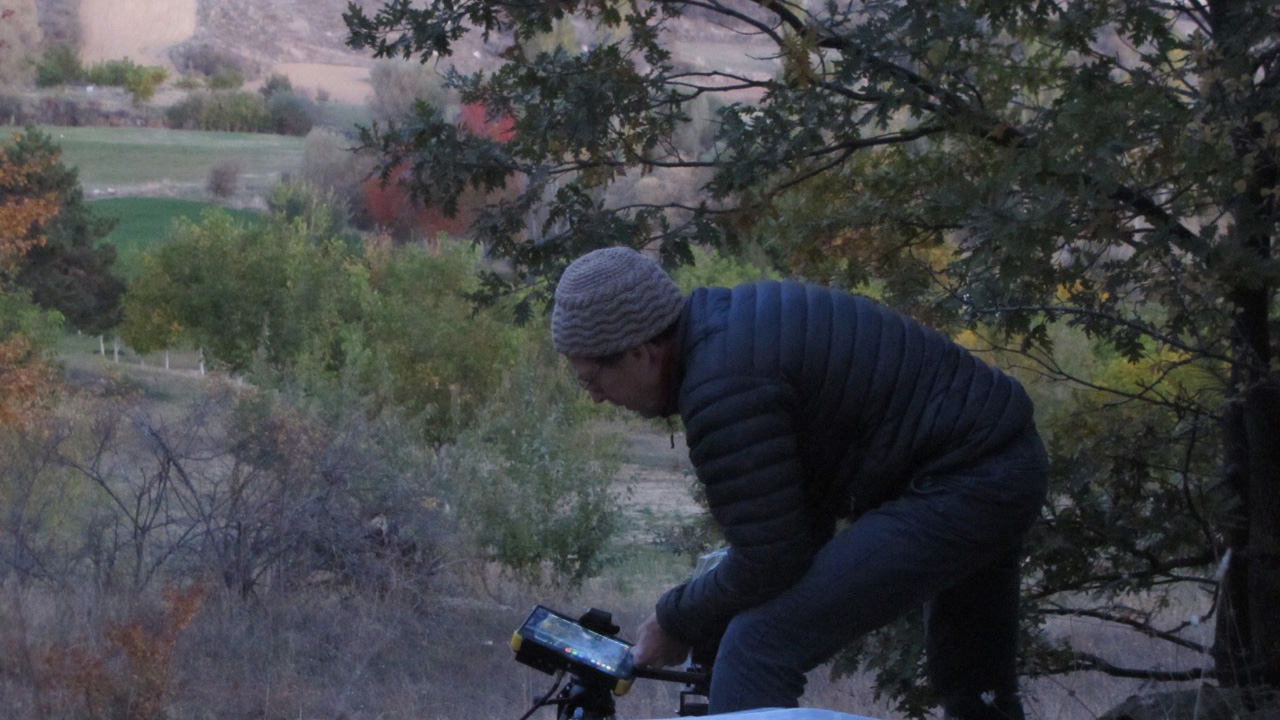Blog
Conversations: Margot Norton
29 August 2019 Thu
Guest curator of “Mika Tajima: Æther” presented at Borusan Contemporary in 2018.
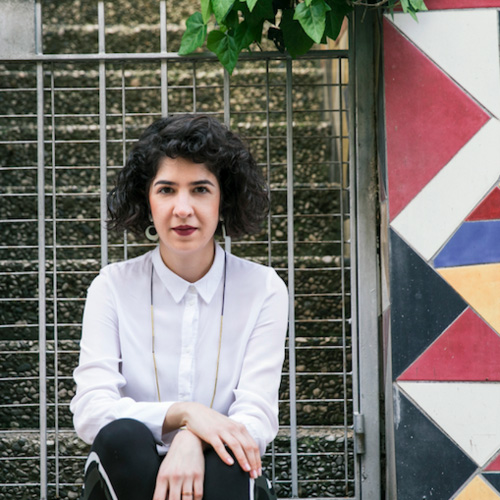
NAZ CUGUOĞLU
nazcuguoglu@gmail.com
Inviting a curator to an institution’s collection could mean various things: A dialogue or a monologue—emptying all the existing narratives to define them with new meanings or reshuffling them around. These collaborations require horizontal allies and generosity from both sides—an attempt to find the undercommons in a world of broken relationships.
Borusan Contemporary has invited seven curators in the last six years to its ever-growing collection of new media art to unlock these probabilities. This series of conversations is a curious response to this cultivating network of associations and relationships, marked with site-specificity and temporality, in a city that is always in flux.
– Naz Cuguoğlu
Naz Cuguoğlu: Japanese-American artist Mika Tajima’s works deal with the techniques and technologies developed to shape and control the human body, such as architectural systems, ergonomic design, and psychographic data. These are all very relevant themes for the current socio-political situation in Turkey. How did you decide to show Tajima’s works at Borusan Contemporary? How did you decide on which four works to include in the exhibition?
Margot Norton: Networks of power and control—in relationship to both our physical and virtual selves—are certainly relevant themes in Turkey, the United States, where Mika Tajima is based, and beyond. Tajima’s work has particular resonance in the current moment, especially considering how technology has been used to gather our data—from recording how many minutes we spend looking at an Instagram post, to analyzing how the images we see in the media might influence a future purchase or a political viewpoint, or even shape our future sentiments or desires.
All of the works in the exhibition were made in the past three years leading up to the exhibition’s opening, including a new work that premiered in this exhibition: Human Synth (Istanbul) (2018). The exhibition provided an opportunity to look at central themes that connect these four recent bodies of work that speak to the ways that our lives are influenced by the invisible forces that saturate our environment, and which have the potential to regulate our bodies and behavior.
NC: How was it to work within the space of Borusan Contemporary which has a very specific architectural design—a “haunted” mansion—and a very significant psychogeographical location—by the Bosphorus—? How did these characteristics interact with the main themes of Tajima’s practice and the works in the exhibition?
MN: When considering the layout of the exhibition, Tajima and I thought it was important to consider the unique architecture of the building and its separate floors and divided spaces, which allowed us to create three separate environments for her works. The lighting in each room was very different. The fourth floor, for example, is more of an enclosed environment, and its surrounding white walls worked beautifully for Tajima’s piece Meridian (Istanbul) (2018). On the second floor, we divided the space into two—the one with a video (Human Synth [Istanbul]) was a darker, more contemplative space with large bean bags where viewers sat back and relaxed while watching the piece, and the other space, which contained her works Pranayama E (2017), Social Chair (2017), and Force Rouch (Manu Dextra Sinistra, Horizontal) (2018), was a very bright environment resembling the often harsh lighting of an office space. Creating these specific environments allows the viewer to experience the architecture in a distinctive way, as they become aware of the space and its possibilities.
Also Borusan Contemporary is situated at a really interesting point in the city right at the center of the Çatalca Peninsula between north and south—on the dividing axis of the bridge that connects the continents of Europe and Asia, right on the edge of the Bosphorus strait. The geographically central location is also perfectly situated for many of her works, such as Human Synth (Istanbul) (2018) and Meridian (Istanbul) (2018), which collect data from social media feeds in the city.
NC: Thinking about what Twitter represents for the collective action in Istanbul (especially after the Gezi Movement), it is a thoughtful decision to show both of these works. Could you tell us more about the works for the viewers that did not see them? How did this decision come about? What did the analyses of these works show you about the trends in collective sentiment in Istanbul? What was the general mood?
MN: The interesting difference between these two works is that Meridian (Istanbul) (2018) responds in real time to aggregate and quantified human sentiment scraped from social media, and Human Synth (Istanbul) (2018) compiles that data and processes it through an algorithm to gauge the direction of future human emotion. Based on real time Twitter feeds in Istanbul, these algorithmic predictions employ natural language processing to translate and distill this data into light color in Meridian (Istanbul), and predict trends in collective sentiment, which are then made visible in the shape, direction, speed and hue of the smoke in Human Synth (Istanbul).
Meridian (Istanbul) was shown previously in New York, and in Tokyo, and with each iteration, the work has varied widely depending on the location, but also depending on the events that occurred in the city during that time. The more turbulent the collective sentiment, the brighter the lights became in Meridian, or the more violent the smoke in Human Synth. Since I was only in Istanbul during the time of the exhibition’s opening, I did not have the chance to see the many variations the piece would take during the duration of the show, but I imagine that it was quite a mercurial moment.
NC: Could you tell us more about the title of the show, Æther, and how it relates to the concepts of technology and data?
MN: According to ancient and medieval science, Æther was an intangible substance that was thought to fill the area of the universe above the terrestrial sphere, where it transmitted light and electromagnetic waves. With the title of the exhibition, Tajima is making a connection between this purportedly ethereal substance and the digital realm. While seemingly invisible, technology and data, like æther, permeate our environment. Tajima’s work incorporates this digital “æther” as a material in order to make visible the seemingly immaterial structures of power that shape the perceptions, choices, and emotions that affect our daily lives.
NC: In one of your interviews, you say: “I am drawn to working on projects that disrupt what is expected and expand the definition of what an art-viewing experience can be.” How can art disrupt and/or complicate taken-for-granted narratives, what are some methodologies to do so? What could the art experience be in the 21st century or in the unknown future?
MN: Just yesterday, I was giving a tour of our current exhibitions here at the New Museum, and someone on the tour, who was visiting the museum for the first time, said to me: “this is not the type of work I would expect to find at a museum.” For me, that is the biggest compliment, for I am interested in working with artists who push back on the conventions associated with traditional ways of looking and experiencing art, who work with the changing conditions of art viewing—bringing it into the present, or even the unknown future—expanding on what art or museums can be.
For example, right now at the New Museum we are showing the work of four artists who are expanding what is possible in the fields of sculptural installation, video, painting, and weaving. Two examples of these shows are by Marta Minujín and Mika Rottenberg. Minujín’s exhibition presents a newly recreated immersive environment called La Menensunda Reloaded. This now-legendary work was originally presented in Buenos Aires in 1965. In the work, visitors are taken on a journey through an intricate labyrinth that includes a tunnel of luminous neon signs, a couple in bed, and a beauty salon, where make-up artists offer treatments. This work counts among the earliest large-scale environments made by artists, demonstrating how Minujín anticipated both the contemporary obsession with participatory spaces and the intensity of experience that proliferates on social media today.
On our second floor we are presenting a selection of recent works by Mika Rottenberg, who is known for creating videos and installations that employ absurdist satire to address critical issues of our time. The exhibition premieres a new work, titled Spaghetti Blockchain, that considers the continually evolving relationship between humans and the material world, alongside recent videos and kinetic sculptures, set within installations that expand on the videos’ narratives and intensify the disorienting aspects of Rottenberg’s work. Through her works, Rottenberg explores how seemingly insignificant or immaterial objects and practices can radically alter our climate, our social structures, the ways that we communicate and interact with one another, and aspects of our existence that we cannot elucidate or even imagine.
NC: You are co-curating the 2021 New Museum Triennial with the curator Jamillah James. How is your collaborative research going so far and what is your vision about the upcoming triennial?
MN: I am honored to be curating the next New Museum Triennial with Jamillah James, who is curator at the Institute for Contemporary Art in Los Angeles, and is someone I deeply admire. So far, we have been traveling a ton and doing research for the upcoming exhibition, which will be opening at the New Museum in Spring 2021. We do not have a theme for the exhibition as of yet—we would like to remain open, since a lot can happen in two years’ time. Yet we are in constant dialogue about how the exhibition might take shape, and we are certainly looking forward to seeing how it will develop!
NC: What else are you research these days? And what are some of your upcoming projects?
MN: I recently finished many projects including curating the Georgian Pavilion at the Venice Biennale with artist Anna K.E., which is on view in the Arsenale through November 24th. I also curated two shows at the New Museum: the aforementioned show with Mika Rottenberg, “Easypieces,” which is on view through September 15th, and traveling to the Museum of Contemporary Art in Chicago this October; and a show of Diedrick Bracken’s weavings, “darling divined,” which is also traveling to the Marciano Foundation in Los Angeles in February, 2020 and the Blanton Museum in Austin, Texas in July, 2020. And New Museum Associate Curator Natalie Bell and I just curated a group exhibition in Athens, Greece, which opened this past June, and is a collaboration between the New Museum, the Deste Foundation, and held at the Benaki Museum. It is titled “The Same River Twice” and includes the work of 31 artists and collectives across generations and nationalities who are living and working in Athens, and will be on view through September 22nd.
After all of these projects opened in May and June, I just went on a small vacation with my family in July, and I am now mainly turning my attention to conducting research with the 2021 Triennial, for which I have upcoming research trips scheduled in Brazil, Turkey, Greece, Argentina, the Czech Republic, and Georgia, and am planning several more in North and South Africa and the Caribbean. I am also curating an exhibition with Mexican-American artist Carmen Argote, “As Above So Below,” which will open at the New Museum on September 17th.
ABOUT THE WRITER
Naz Cuguoğlu is a curator and art writer, based in San Francisco and Istanbul. She is the co-founder of Collective Çukurcuma. She held various positions at KADIST, The Wattis Institute, de Young Museum, SFMOMA Public Knowledge, Joan Mitchell Foundation, Zilberman Gallery, Maumau Art Residency, and Mixer. Her writings have been featured in SFMOMA Open Space, Art Asia Pacific, Hyperallergic, Nka: Journal of Contemporary African Art, M-est.org, and elsewhere. She received her BA in Psychology and MA in Social Psychology, both from Koç University, and another MA from California College of the Arts’ Curatorial Practice program. She has curated exhibitions internationally, at institutions such as the Wattis Institute (San Francisco), 15th Istanbul Biennial Public Program, Framer Framed (Amsterdam), Kunstraum Leipzig, Red Bull Art Around Istanbul, 5533 among many others. She co-edited three books: After Alexandria, the Flood (2015); Between Places (2016); and The Word for World is Forest (2020).

